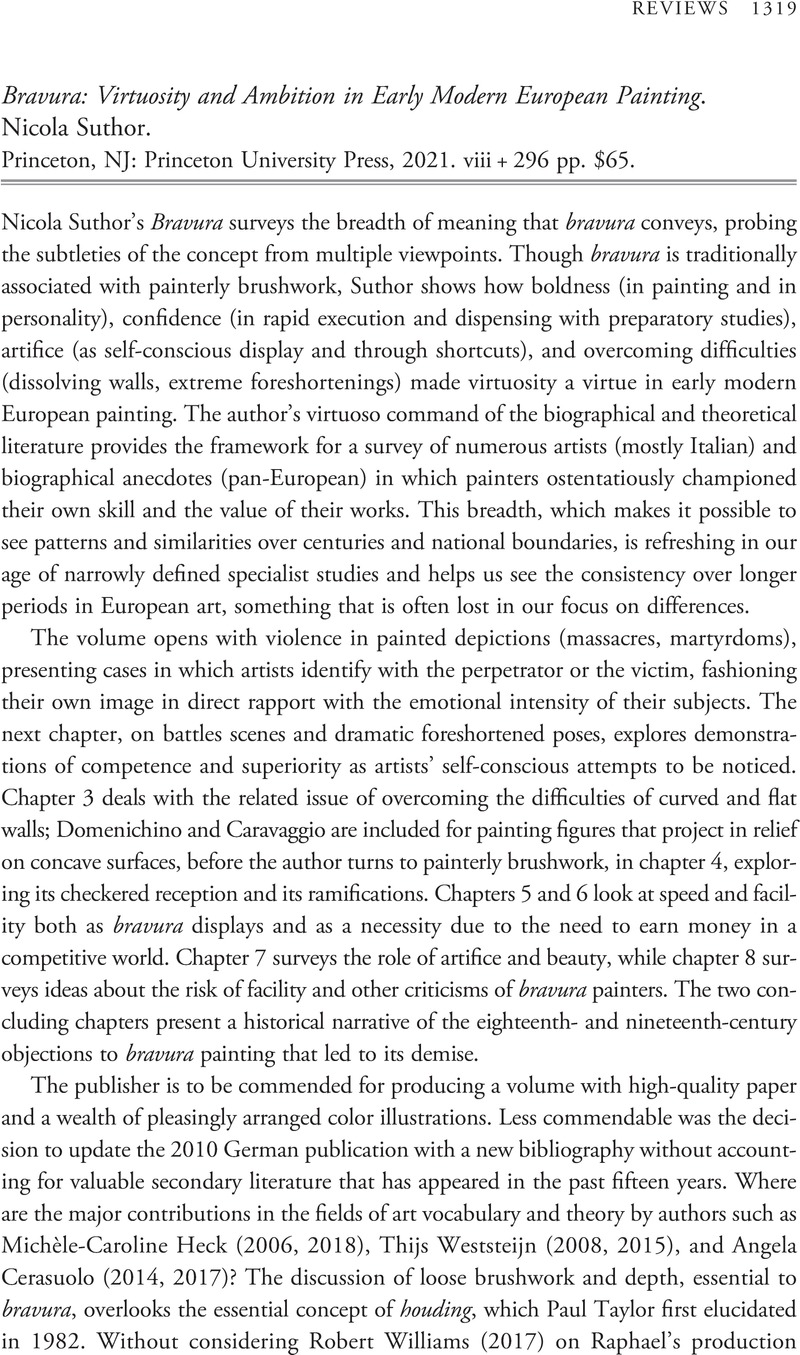No CrossRef data available.
Article contents
Bravura: Virtuosity and Ambition in Early Modern European Painting. Nicola Suthor. Princeton, NJ: Princeton University Press, 2021. viii + 296 pp. $65.
Review products
Bravura: Virtuosity and Ambition in Early Modern European Painting. Nicola Suthor. Princeton, NJ: Princeton University Press, 2021. viii + 296 pp. $65.
Published online by Cambridge University Press: 09 January 2023
Abstract
An abstract is not available for this content so a preview has been provided. Please use the Get access link above for information on how to access this content.

- Type
- Review
- Information
- Copyright
- Copyright © The Author(s), 2022. Published by the Renaissance Society of America



